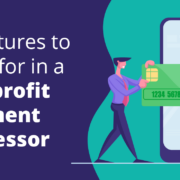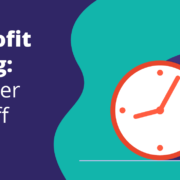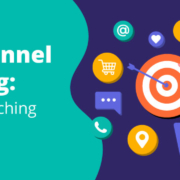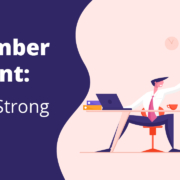How to Streamline Your Nonprofit’s Payroll Process: 3 Tips
Administrative tasks are the foundation upon which your nonprofit’s accomplishments are built. When your organization t operates efficiently, you can spend less time worrying about internal tasks and more time fulfilling your mission.
Administrative tasks aren’t strictly limited to organizing donor data or handling cash and non-cash donations. Recording financial transactions so that you can produce a financial scorecard monthly is just as important to long-term sustainability.
Payroll is one of the largest expenses a nonprofit incurs. Therefore, preparing it is an essential administrative process that often can be streamlined while still ensuring that your organization complies with legal obligations and compensates its hard-working employees. In this guide, we’ll explore three ways to streamline payroll.
1. Partner With a Professional Employer Organization (PEO)
When it comes to managing your nonprofit’s finances, you’ve likely considered outsourcing accounting to an experienced professional. But have you considered outsourcing your employment practices as well?
Professional employer organizations (PEOs) provide expert resources in payroll, human resources, tax compliance, and more. This enables your nonprofit to:
- Lower the cost of benefits through economies of scale: Chazin & Company explains that PEOs leverage the collective bargaining power of multiple organizations to negotiate lower rates for health insurance and other employee benefits. As a result, your nonprofit can offer competitive benefits packages without financial strain and can even reallocate its savings toward your organization’s mission.
- Reduce the risk of legal complications and financial penalties: PEOs are familiar with federal and state compliance requirements related to hiring and employment practices. Partnering with a PEO provides access to their expertise, often backed by years of experience and specialized knowledge.
- Eliminate the need for an in-house HR department: Instead of developing an in-house HR department to hire candidates with adequate qualifications and conduct staff training, partnering with a PEO allows your nonprofit to access personnel support without needing to fund an entirely new department.
If your organization decides to work with a PEO, look for experienced and knowledgeable professionals with certifications in HR and payroll management. Certifications such as Certified Professional in Human Resources (PHR), Senior Professional in Human Resources (SPHR), and Certified Payroll Professional (CPP) indicate that the PEO’s staff bring reliable expertise to the table.
2. Simplify Your Payroll Process
There are a lot of moving parts in a nonprofit’s payroll process. For example, you’ll withhold money from employees’ paychecks to pay certain taxes, but not from contractors’ paychecks since they pay their own taxes. Volunteers, on the other hand, shouldn’t be compensated at all, aside from non-monetary thank-you gifts.
Be sure to properly classify everyone who works for you to keep your records accurate. Also, track essential employee information, such as:
- Social Security numbers
- Withholdings
- Benefits
- Overtime
- Bonuses
Along with keeping your records organized, compensation practices impact your nonprofit’s overall cash flow. As Double the Donation explains, a healthy nonprofit operating reserve should be sufficient to cover one full payroll cycle, including taxes. This means you’ll need data on each employee’s overtime pay and bonuses to accurately calculate your payroll obligations.
To make tracking compensation easier, establish a standard pay schedule for every employee. Standardizing pay periods reduces the amount of time spent tracking each employee’s pay. Plus, your team will know exactly when to expect their paychecks, fostering trust in your organization.
3. Maintain Compliance
As a nonprofit leader, you’re likely no stranger to the compliance requirements necessary for maintaining tax-exempt status. These regulations extend to payroll processes, as well, and can lead to significant financial penalties if not followed.
Specific regulations include:
- Tax exemption: Just because your nonprofit has tax-exempt status doesn’t mean it’s exempt from paying all taxes. Organizations must withhold and file Federal Income Taxes (FITW) and Social Security and Medicare Taxes (FICA) on behalf of their employees. Additionally, most employers must match and remit FICA taxes withheld.
- Fair Labor Standards Act (FLSA): According to the Department of Labor, The Fair Labor Standards Act (FLSA) establishes minimum wage, overtime pay, recordkeeping, and youth employment standards affecting employees in the private sector and in Federal, State, and local governments. Non-profit charitable organizations are not covered enterprises under the FLSA unless they engage in ordinary commercial activities that result in sales made or business done, such as operating a merchandise shop or providing veterinary services for a fee. If your nonprofit is engaged in activities subject to the FLSA, you’ll likely need to familiarize yourself with this act’s provisions.
- Wage requirements: Nonprofits must follow federal and state wage laws that require employers to pay minimum wage. When paying more than minimum wage, compensation must be reasonable but not excessive. To familiarize yourself with appropriate compensation amounts and potential overtime requirements, review your state’s laws and industry standards.
- Unemployment compensation: While 501(c)(3) nonprofits are exempt from filing Federal Unemployment Taxes (FUTA), they must still adhere to their state’s unemployment program requirements. This means either contributing to the state’s unemployment program or annually reimbursing the state for paid unemployment benefits.
Compensation laws and regulations may change, meaning your nonprofit must check in regularly to determine whether there have been any updates. To check for changes, the IRS website is a great resource. Additionally, local and state government websites also lay out tax laws that vary by municipality.
You can also brush up on nonprofit accounting basics to learn more about compliance standards your payroll (and other financial) processes must follow. Also, consulting a CPA can help you access the professional insight needed to ensure your finances are in order.
Along with the benefits your nonprofit can realize from a streamlined payroll process, your employees will also appreciate their employer maintaining an organized approach to compensation. With the right practices in place, your nonprofit won’t just retain employees and boost team morale—you’ll do the right thing by taking care of the team that makes your mission possible.









